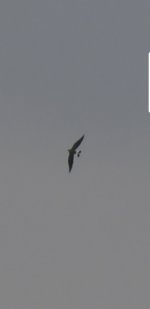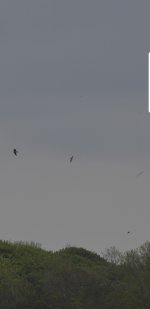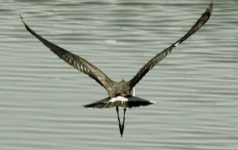LaplandBunting
Well-known member

Hi all,
I had two sightings of what I now believe to be a Collared Pratincole in Norfolk a few weeks back.
For those who know the area, the first sighting was along Beach Road in Salthouse. I caught a glimpse of a bird fly up from the marshes and across the road towards Cley and was instantly baffled. It was largely silhouetted in the dim morning light and rain but it's wings were long and pointed which contrasted with a comparably thin body, almost Tern-like in structure. I considered the usual Falcons but I got the impression this was slightly smaller and had a proportionally thinner body and longer wings. It's flight was striking as well, a short flap followed by a moment of stillness, then the same again, which it repeated as it swept through low to the ground. I probably haven't described that very well but I have watched a few videos of Collared Pratincoles in flight and it seems spot on. So, my first question is whether any other UK species has a similar flight pattern and body structure to Collared Pratincole? Whilst I say the sighting was silhouetted, my notes are consistent with the general colours of a Collared Pratincole too, so I see no issue there.
The second 'sighting' was at Holkham. It was much less of a sighting but upon reviewing my photographs of a Marsh Harrier, I found the following bird in the background (see below). After consultation with various ID guides I am relatively convinced that this could be a Collared Pratincole. I am more convinced given that one was reported in the general area a day or so beforehand. So, my second question, is this bird inadvertently photographed a good fit for Collared Pratincole?
If anyone can help answer either question I would be very grateful and interested to know.
Thanks in advance.
I had two sightings of what I now believe to be a Collared Pratincole in Norfolk a few weeks back.
For those who know the area, the first sighting was along Beach Road in Salthouse. I caught a glimpse of a bird fly up from the marshes and across the road towards Cley and was instantly baffled. It was largely silhouetted in the dim morning light and rain but it's wings were long and pointed which contrasted with a comparably thin body, almost Tern-like in structure. I considered the usual Falcons but I got the impression this was slightly smaller and had a proportionally thinner body and longer wings. It's flight was striking as well, a short flap followed by a moment of stillness, then the same again, which it repeated as it swept through low to the ground. I probably haven't described that very well but I have watched a few videos of Collared Pratincoles in flight and it seems spot on. So, my first question is whether any other UK species has a similar flight pattern and body structure to Collared Pratincole? Whilst I say the sighting was silhouetted, my notes are consistent with the general colours of a Collared Pratincole too, so I see no issue there.
The second 'sighting' was at Holkham. It was much less of a sighting but upon reviewing my photographs of a Marsh Harrier, I found the following bird in the background (see below). After consultation with various ID guides I am relatively convinced that this could be a Collared Pratincole. I am more convinced given that one was reported in the general area a day or so beforehand. So, my second question, is this bird inadvertently photographed a good fit for Collared Pratincole?
If anyone can help answer either question I would be very grateful and interested to know.
Thanks in advance.
Attachments
Last edited by a moderator:






